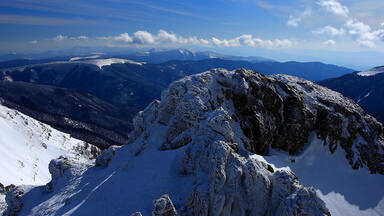African Natural World Heritage site managers assess climate vulnerability
UNESCO has piloted an online training course on climate change adaptation and resilience in two natural World Heritage sites in Africa, with site managers from Mosi-oa-Tunya / Victoria Falls (Zimbabwe / Zambia) and Salonga National Park (Democratic Republic of Congo) joining. The outcome reveals the vulnerability of sites to climate change but offers options to reduce risks.
Climate change is the greatest threat facing World Heritage today, with one-third of natural World Heritage sites threatened by climate change, according to the 2020 IUCN World Heritage Outlook. Many World Heritage sites however do not have climate adaptation plans, or lack adequate capacity to assess the vulnerability of their sites. African heritage sites in particular are ‘neither prepared for, nor adapted to, future climate change’, according to the IPCC’s Sixth Assessment Report.
UNESCO worked with experts from James Cook University to pilot an online climate vulnerability training course with two natural World Heritage sites in Africa, Mosi-oa-Tunya / Victoria Falls (Zimbabwe / Zambia) and Salonga National Park (Democratic Republic of Congo).
Across July and August 2022, site managers engaged in facilitated training sessions to examine the interlinkages between climate adaptation, vulnerability assessment of the Outstanding Universal Value (OUV) of sites, and the unique role the World Heritage Convention can play in building resilience of World Heritage properties.
While located within different geographical contexts, results of the pilot training indicate that both sites were vulnerable to the unfolding climate variability and future impacts of climate change. These range from changing temperature trends, heat waves and drought to storm intensity and frequency. Both sites also showed a degree of adaptive capacity, which can support protection of their heritage values. Comments from participants from Mosi-oa-Tunya / Victoria Falls (Zimbabwe / Zambia) World Heritage site revealed that ecological knowledge was strong within the local management team, providing a good foundation of scientific support. Meanwhile, participants from Salonga National Park (Democratic Republic of Congo) World Heritage site detailed that while there was room for improvement, there already exists a reasonable amount of resourcing and support for effective adaptive strategies to be enacted within the World Heritage site.
Participant feedback from across the two World Heritage sites indicated that the training course improved their understanding of climate stressors and adaptive strategies that can be undertaken in response, and, importantly, revealed gaps in knowledge and data.
Mosi-oa-Tunya / Victoria Falls World Heritage site (Zimbabwe / Zambia) is the world’s greatest sheet of falling water and significant worldwide for its exceptional geological and geomorphological features and active land formation processes with outstanding beauty attributed to the falls.
Salonga National Park (Democratic Republic of Congo) is one of the largest protected area of dense rainforest on the African continent extending over a vast area of 36,000 km2 , and was found in a recent UNESCO report to play a fundamental role in climate regulation and the sequestration of carbon.
The development of the training modules, as well as their pilot application with the two African natural World Heritage sites was made possible thanks to support from the Government of Flanders (Kingdom of Belgium).
Lessons learnt from this activity will allow for the adaptation of the training course for application in other natural World Heritage sites within a successive project funded by the Government of the Netherlands.




